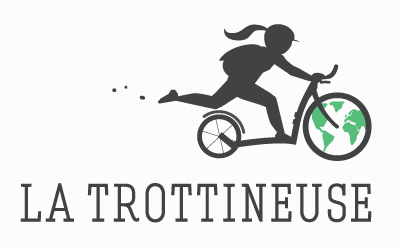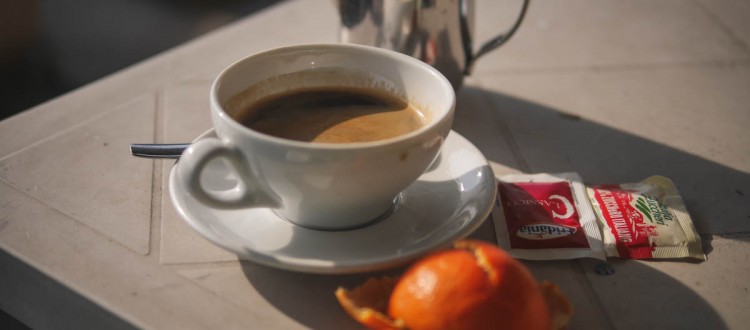ITALY 1.1 – UN CAFFÈ AMERICANO PER FAVORE (Piedmont, Lombardy, Veneto)
About coffee. In Italy.
For a time, I stopped harassing baristas with my un-caffè-americano-per-favore (prounounced moreover with residues of my spanish ride). In the motherland of espresso, it’s such pure sin to ingest the black gold diluted, that the americano is served in two containers: a cup holding the sublime essence, and a hot pot of water destined to help one drown the qahwah. Of course boiling hot, in case it could prevent one from proceeding to the profanation act. I can feel people stop breathing in the whole café when I’m initiating the fatal spraying, a sadistic grin on my face. In Spain, rule was more or less coffee con leche, but the americano would ravish bartenders, one just had to be a bit patient with the machine. In Tangier, the long coffee had the capacity of a mint syrup and water glass, one would have to let the coffee dregs fall on to the bottom of the blurred goblet.
The more I went to the East of the Valley, the more thick the mystery of the americano, to my waiters. Once, one called the father on the white telephone, asking, in panic, with which impious manipulation of the new Nuova Simonelli the hideous muck should be orthodoxically extracted. Another time, I was directly asked about the instructions, and confused by my shaky italian, one would serve me, on the dark bottom of the cup, bottled water, frizzante! On that occasion, it’s me who was shocked by the miserable treatment inflicted upon the grain. With horror, I sniffed a glimpse of what had to be an enormous lack of savoir-vivre wafting from me, given that people would imagine I could enjoy such a horrid mix…Then I was enquired about the amount of money I would generally agree to get myself rid off for that Thing.
At the extremity of Lombardy, rural caffeterias were often tended by asian families, a local specificity, that would by no means be worried by the noetic flood happening right on their counter. Pastas were slurped in the bowls, cousins would visit on a sunny with the last born child, beside a rustic table of card players.
I switched to caffè lungo for some days, just a blasé espresso in my opinion. Then in Veneto was I back to the northern american beverage, without any more fuss.
The supreme refinement was reached in Trieste (capital of the coffee in Italy, one third of the roman importations) where, on the Canal Grande, I was presented the hot water in a miniature bottle of Latte with a hood.
By a piemontese morning I had hit early the road, quite happy of my effective camp folding in the negative temperature. I was abruptly blocked on a path by water. A bridge was on reparation and a few workmen were already active there, probably dropped by the truck that had woken me up, rolling a few minutes before me on the icy trail. I was on a lost trail, averagely kickable, if I was to not find a way of persuading the bearded men in beanies to let me pass, I’d be forced to turn back on a the earth and gravel track for some miles. After a few exchanges of inquiring glances, some signs in direction of a man at a digging machine apparently leading the group (it’s always interesting to witness the game of hierarchic relationships, the signs are often deceitful, one has to be quick in analysis, and it happens that an information, an order circulates without any obvious hint of its real origination), a worker offers me some of the coffee he’s about to share, in order to initiate the long day of labour. A very small goblet, a gobletini, and a very small amount of liquid, more than a piccolo liquidino of that black nectar. I’m carefully anticipating a bitter booze designed to whip any of those strong constitutions, even if I’m used to drinking my coffee strong and without sugar ( americanos in quantity, ristrettos by the taste of it, well a Long Black… what, I am emphasizing !). Nay, t’was the most sweet sugary espresso I’d ever drunk! Those men with drilling hammers, trowels and shovels, with their italian cafetiere (invented by a French man) whistling beam in a corner of the winterish construction site, getting ready to spend an enormous amount of energy to repair a piece of infrastructure jumping over a river, those men drink to get to work the smoothest liquor. Americano is nicknamed the « nun coffee », well, I wondered for a while if it didn’t mean that is was in fact very strong. How warmer I felt then, and merrily began the fresh new day, crossing the illicit bridge with my fluorescent yellow and orange clothed barista, already thinking of the next café on my way!
It’s in cafés, caffeteria and bars of the countrysides that I spend a lot of my favorite moments, or at their terrasse. Standing and kicking most of my time outside, no need to say that I appreciate entering in the warm living room of the village, open to any one and at any hour (on the contrary of other shops, definitely close for now between 13 and 16), and accessing as by enchantment the unchangeable scene of the prosaic exchanges around the counter. Oh, how I love to break the rhythm of my long-winded roll and hang up the time, pining it on the edge of a kitch porcelain, on the talismans floating at the window, on the neon or the disappearing lettering of the wall, in the spoon a bit dusky jingling on the plate! Is seems rural and does not look much? Better, chance is big then to live a moment of simple delight, to leave at the door all things supererogatory. For me, who has no house, that place where one person at least always stands, becomes a home, offers me a seat, a table, a drink, a say, a peer.
At the café, everyone knows everybody, the vivacity of topics of conversation reaches heights, at its maximum is their probability of transformation, swerves, bounce, tension, obfuscation, sudden peace when the cup is brought to the vibrant mouth, leaving on it a smile or a bit of milk, right after the leap has, with the utmost spontaneous common sense, shouted out a few home truths about the world. Come on, let’s forget everything, let’s begin again! It’s a place where words from everyday are delivered, speaking of a common Earth, in a pre-modern, pre-newtonian fashion (the sun keeps rising up and setting down, eternally). It’s a place where similar things are pronounced every day, tirelessly the ritual of the going day is performed, over and over (first coffee, coffee of 11am, coffee of 1pm, coffee of 4pm, deca of the evening). Can be done with a half bock too, or some fermented grape juice!
The milieu, at first sights enclosed, is, in reality, hyper-receptive, hyper-porous to external elements, its primary fuel for the show to be on per diem. It’s here that familiar people frequent unknown ones, in the most courteous way can be. Everyone is welcomed in the local inn, for, when one is only passing, one won’t grow roots: one becomes then a short-lived objet of curiosity, of advertisement, of candid friendship. The most strongly woven community of villagers seems to accept, with merriment, the intrusion of the traveler pushing the door of a place he does not know, whilst it is for the seated public, the most customary, very own territory.
Thanks to Ippolito Aldobrandini, otherwise famous as Clément VIII, a pope from the 16th century known and feared for his extreme firmness on many topics, coffee was authorized in the Occident after the prelate tasted it and concluded it would have been too much a waste to deny oneself the pleasure of such contentment : « too sweet a thing to be the work of the devil ». Well, Monsignor Hips-Adolfo Arnold-finish, nowadays, the liberal evil figured out everything about the human’s soul machinery : he renders what serves him seem pretty joyful, and rather sad what would commonly reconcile. Fortunately though, in cafés, part of the popular ember has not been extinguished by the cold monster, and I was offered many time and with a happy heart, the Oriental edible fuel.
1 (Come on !)








 You can be part of the adventure by making a donation or offering gear to La Trottineuse.
It will be help me kick further during the humanistic challenges: by contributing to logistics (food and punctual accommodation, ferries), equipment and communication.
Merci :)
Or you can contact me directly to obtain bank account details or any other infos : hello[at]latrottineuse.com
You can be part of the adventure by making a donation or offering gear to La Trottineuse.
It will be help me kick further during the humanistic challenges: by contributing to logistics (food and punctual accommodation, ferries), equipment and communication.
Merci :)
Or you can contact me directly to obtain bank account details or any other infos : hello[at]latrottineuse.com